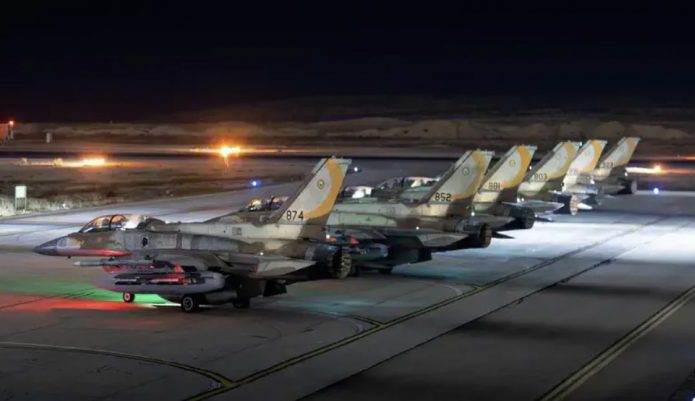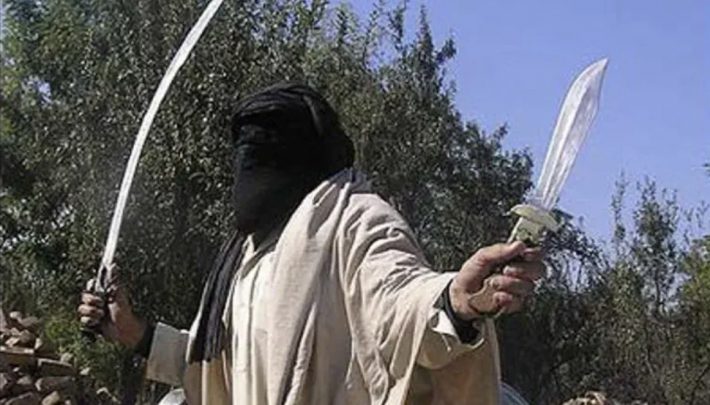The IDF has established an open aerial corridor to Tehran, striking at the heart of Iran’s nuclear program, missile production and military leadership. And not a moment too soon. Analysis.
Yaakov Lappinis an Israel-based military affairs correspondent and analyst. He is the in-house analyst at the Miryam Institute; a research associate at the Alma Research and Education Center; and a research associate at the Begin-Sadat Center for Strategic Studies at Bar-Ilan University.
(JNS) As Iran continued its nightly barrages of ballistic missiles aimed at Israeli population centers, the Israel Defense Forces confirmed it has established air superiority from western Iran to the Iranian capital, and is operating freely over Tehran.
An IDF official, speaking on Sunday after a night that saw over 70 surface-to-surface missiles fired at Israel, killing 13 people, stated that the ongoing operation is a necessary response to an existential threat that goes beyond the nuclear program.
The official revealed that, according to Israeli intelligence, the Iranian regime has a concrete plan to increase its arsenal to 8,000 ballistic missiles in the near future with the express purpose of overwhelming Israel.
“Iran is intentionally firing ballistic missiles at Israeli homes and apartments. These aren’t misfires. They are deliberately targeting civilians,” the official stated. “I want to share with you what it means when I’ve been telling you the last few days that Iran is planning to turn ballistic missiles into a tool to annihilate Israel.”
He continued, “Currently, the assessment entering this latest conflict a few days ago was that Iran has somewhere in the ballpark of 2000 missiles. We understand that they have a plan to achieve in the near future many more thousands of missiles—8,000 missiles. I just want you to imagine the attack Saturday night. That was just dozens of missiles. Imagine them having thousands of missiles.”
The official contrasted Iran’s attack tactics with Israel’s, noting that the IDF issued warnings to Iranian civilians to evacuate areas around weapons production sites before strikes. “This portrays perfectly the difference between us. They are firing missiles at civilians. We are targeting military and nuclear targets. We are giving up the element of surprise, which is the most important element in the battlefield.”
Kuperwasser’s take
Speaking at a Jerusalem Press Club briefing on June 15, Brig. Gen.l (res.) Yossi Kuperwasser, former head of research at IDF Military Intelligence and current director of the Jerusalem Institute for Strategy and Security (JISS), elaborated on the strategic necessity behind the operation.
“We embarked on an operation because we didn’t have any other alternative but launching it,” Kuperwasser said. “The Iranians were moving towards having the capability to produce nuclear weapons within a short period of time and not only one weapon, but a small arsenal of nuclear weapons. And we had to move.”
Kuperwasser said Israel had waited at the request of U.S. President Donald Trump to see if there was an Iranian “willingness” to strike a deal through diplomacy that would have stopped Iran from obtaining nuclear weapons.
“This didn’t work and the Iranians made it clear that they’re going to refuse to accept this offer. What we did in the first strike was extremely important,” he said. “We eliminated nine of their scientists who were working on this weaponization project and we hit hard at their air defense systems so that after two days of operation, we were able to control the skies of Tehran and western Iran and keep on acting against the infrastructure of both the nuclear project and the missiles.”
IDF assessment
The IDF confirmed on Sunday that in three days, it had struck more than 170 Iranian targets and more than 720 military infrastructure components. Targets included the headquarters of the Iranian Defense Ministry and the headquarters of the nuclear project (known as SPND).
The IDF official noted that Israel also struck two dual-use fuel sites near the port of Bandar Abbas and another near Tehran that support both military and nuclear activity. Simultaneously, the IDF carried out an airstrike in Yemen targeting the Houthi chief of staff.
At a separate Jerusalem Press Club briefing on Saturday, Oded Ailam, former head of the Counterterrorism Division in the Mossad and a current researcher at the Jerusalem Center for Security and Foreign Affairs, described the long-term preparations for the mission.
“It’s not just a hit and run operation, it’s something that was prepared for a long time, for years by the Mossad and by other groups within the Israeli administration,” Ailam stated. “It’s a long process to infiltrate Iran in such a capacity that had been reflected in this campaign.”
He added that Operation Rising Lion, Israel’s military campaign against Iran, would be “a long-lasting operation… that still has quite a few targets and objectives to be reached by the Mossad and by the IDF. So definitely, it’s not the end of the story.”
Looking ahead
Dr. Eyal Pinko, a senior research fellow at the Begin-Sadat Center, provided an assessment of Iran’s remaining missile capabilities.
“The Iranians started this campaign with 2,000 ballistic missiles of different types and from different families,” Pinko said, noting that they had already fired more than 500 missiles at Israel while others had been destroyed by Israeli Air Force attacks.
“It gives them a huge arsenal to fire, but in order to maintain their ability to strike Israel in the next few days, I believe that they will strike in fewer salvos or fewer missiles, at the same time trying to preserve their capabilities more and more,” Pinto said. “But what maybe is more important from the Israeli point of view is that we also took down their launching vehicles, which are the critical part in the [missile attack] chain.”
An absence of launch vehicles creates a bottleneck that means that even if Iran still has many missiles, it lacks the means to fire them at Israel, he said.
Tal Inbar, a ballistic missile and drone expert, addressed the effectiveness of Israel’s multi-layered air defense, which has been able to intercept most of the Iranian ballistic missiles.
“An Iron Dome missile is much cheaper and we can produce many more missiles in the same amount of time in comparison with the heavier and the more sophisticated and of course more expensive Arrow 2 and especially Arrow 3,” Inbar explained.
Arrow 2 operates in the higher atmosphere, while Arrow 3 shoots down ballistic threats in space.
Iranian unmanned aerial vehicles, in comparison with missiles, are crude and simple to assemble, he said. Many of them have been intercepted with Apache helicopters, as well as by interceptors on-board the Israeli Navy vessels, according to the IDF.
On Sunday, IDF Chief of the General Staff, Lt. Gen. Eyal Zamir held a situational assessment in the IAF’s underground command center, stating that the operation is “reshaping the strategic reality of the State of Israel. We are removing an existential threat and reinforcing our security.”
He added, “The IDF, through the Israeli Air Force, has paved the way to Tehran and is striking the regime’s infrastructure and nuclear program with precision and on a scale beyond what the enemy had anticipated. A strong home front gives us the strength to carry on with our mission. We will continue to act with determination, strength, responsibility, and in full cooperation with all security branches—until all our objectives are achieved.”





